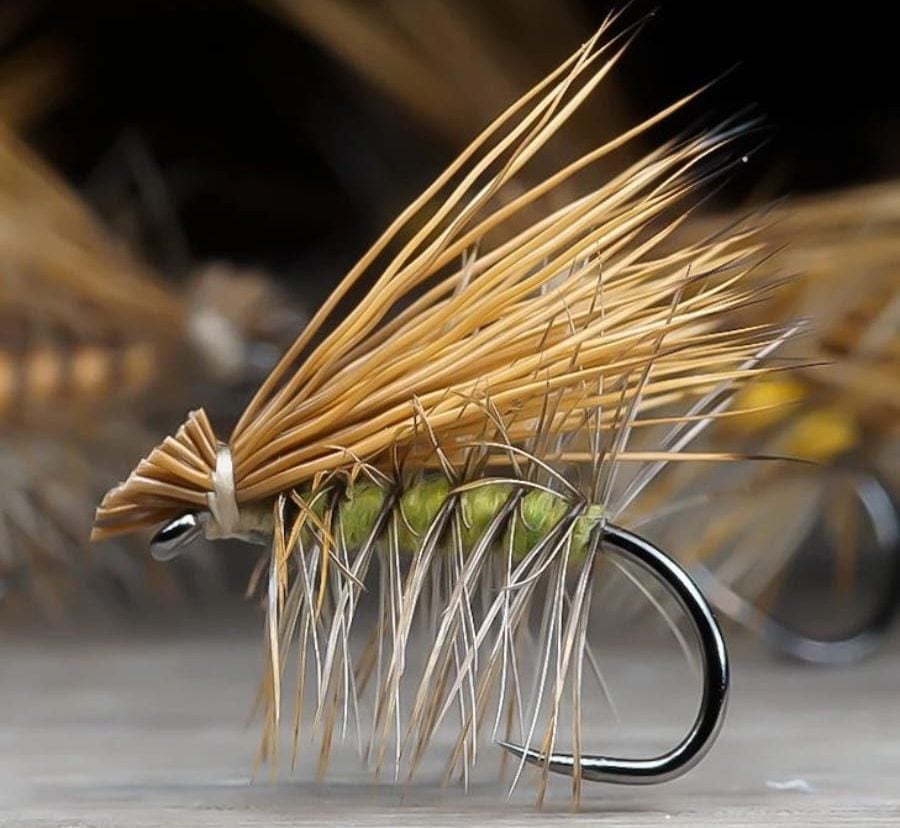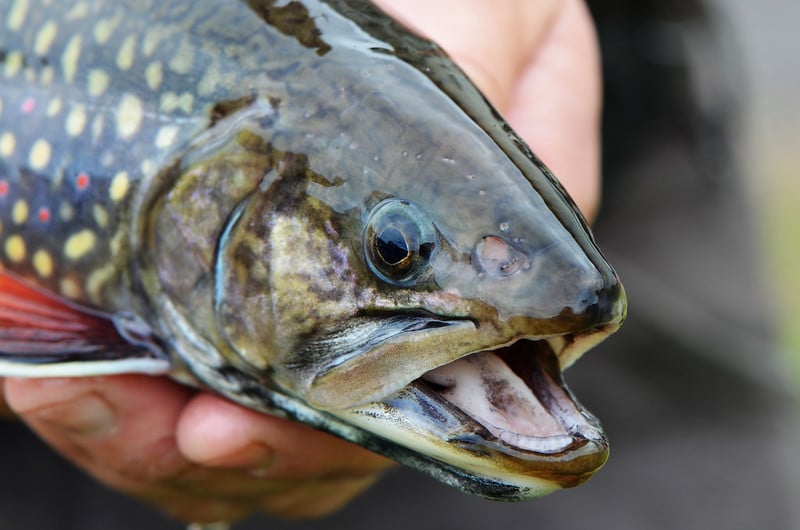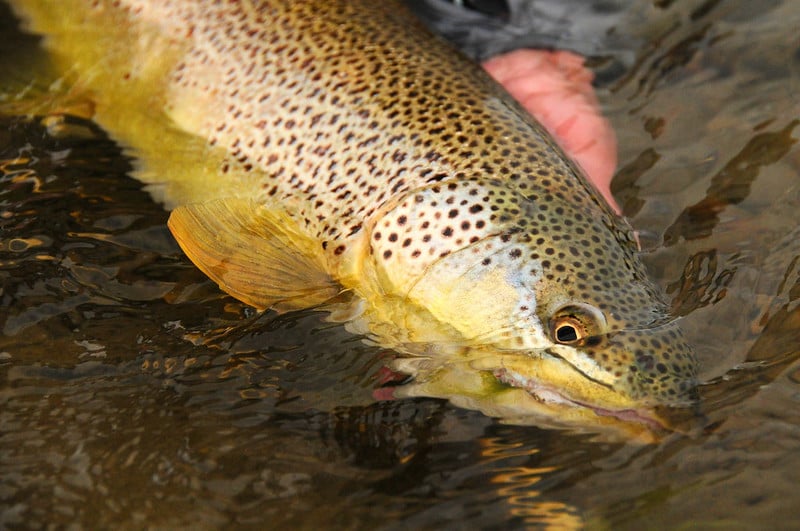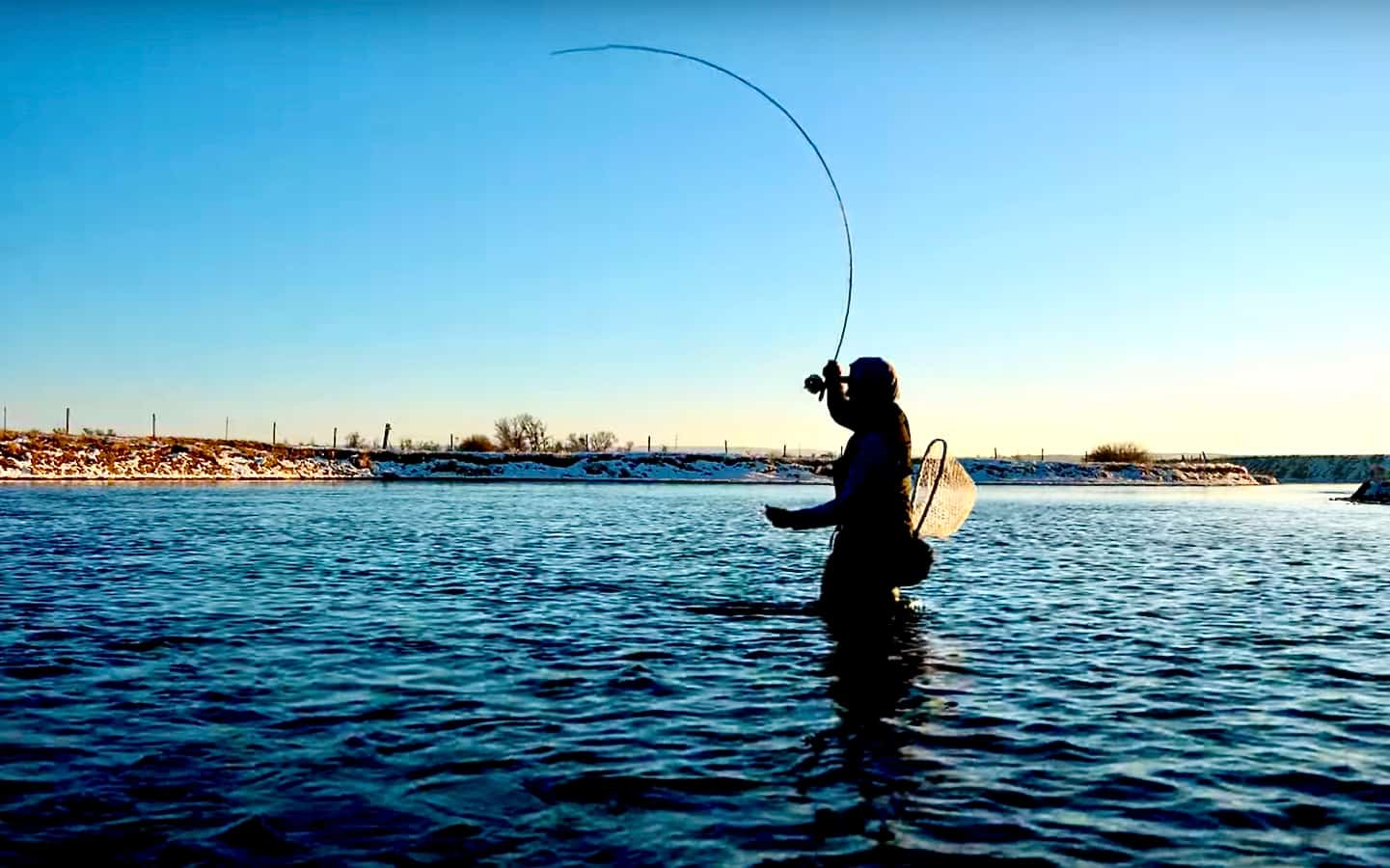Get Twitchy With it: How to Move a Dry Fly to Catch More Trout

Tie and image by Peter Steen
Every fly angler out there is obsessed with the perfect drift—making that flawless cast and mending just right so that our dry flies float placidly downstream. It’s a skill that takes years to master. You must learn to read water and how to make micro-adjustments to ensure that your fly remains completely still as it floats along. It can be frustrating but necessary to learn, as it’s the only way to get a trout to rise and take our fly from the surface.
Or so we believe.
The truth is that you don’t always have to keep your fly still. In fact, there are a lot of times when movement can actually catch you more trout. This doesn’t mean you can drag your flies through the water or jolt and rip them around like a popper. You still have to present your dry fly as naturally as possible, but sometimes adding a little bit of movement makes your flies appear more natural.
Big Bug Pulsing
Have you ever watched a big insect like a grasshopper, stonefly, or beetle fall into the water? It doesn’t freeze and hold completely still—it panics. Kicking it’s legs and fluttering its wings, the insect tries to get back to shore, which in turn makes it a more realistic and delectable target for roving trout. This is especially true on rivers with a lot of fishing pressure when trout have seen a conveyor belt of dead-drifting fly imitations floating over their heads and only trust bugs with a little bit of wiggle.
Creating a bit of movement with bigger flies isn’t done by ripping and stripping the line like you’re fishing a streamer, but by adding a gentle rhythmic pulse to the fly. The best way to do this is by gently flicking the tip of your fly rod up and down as the fly drifts, adding a slight amount of metrical tension to the line and pulling your fly gently forward to imitate a hopper or stonefly swimming to shore. You want to be as gentle as possible when doing this, making only the slightest ripple around your drifting fly. This may take a bit or practice, but when you get it right it can change your fishing completely. This is a great strategy for fishing slower moving water when trout are spread out and don’t necessarily have a feeding lane. It’s best done with a realistic hopper pattern such as the Mimic Hopper. The slight vibration in the water and the movement of the fly are almost guaranteed to draw in a cruising fish and will tempt them to at least take a closer look at your fly.
When fishing in faster water or when fishing particularly dramatic bugs like salmonflies or cicadas, pulsing your bugs with a bit more vigor can create some truly furious and spectacular strikes. You can do this with the same flicks you do in slower water, but add more gusto and use a larger fly pattern like the Chubby Norman or Flutterbug. Splash your fly down into the water and then as the line comes tight, flick your rod tip two or three times rapidly, sending small waves down the line like a Crossfitter using battle ropes. The waves will cause your fly to jerk forward rapidly like a panicked insect trying to escape the pull of the water, triggering big trout to come in and smash it before it can get away.
Skating and Skittering
Skating and skittering are two Old World techniques generally used by salmon and steelhead anglers. Both techniques can be equally effective for trout when they’re practiced with the right flies in the right places.
Skating dry flies usually entails casting the fly slightly downstream at roughly a 45-degree angle and allowing the line to lighten so that the bug skates across the surface of the water, creating a small wake as it swings across the stream. This can be a great technique when fishing large caddisfly patterns like the Stimulator or Championship Caddis or even foam stoneflies like the Mutant Stone in slow-moving water or in the tail outs of faster moving pools. To add a bit of extra zeal to a skating fly, raise your rod as the fly skates and wiggle rod tip back and forth which will cause the bug to zig-zag a bit as it skates like a large insect having trouble taking off. It can be a fantastic method for tempting hyperactive trout looking to crush their prey.
Skittering is a more refined method that entails lowering your rod tip over the water and giving it three or four fast side to side pulses that cause your dry fly to jet forward and dance across the surface of the water. It’s a great method for fishing in lakes and ponds or for the slow moving pools and backwaters on a big river where large insects have trouble taking off.
Skitter dry flies with a varying cadence. Let your fly land and drift for a few feet and then skitter it across the surface for a few feet then let it drift before skittering it again. Often large trout attracted to the bug will follow behind it and track the dry flies progress as it drifts, only striking when the fly suddenly starts skittering away from them.
Calling them Up
Making the perfect drift in the right places is a vital part of being a good fly angler. Yet being able to drift your flies and then move them appropriately can and will take your dry fly fishing to another level. As fun as it is to watch a trout slowly rise to inhale your perfectly drifted offering, getting a trout to move to and aggressively explode on your fly makes dry fly fishing even more exciting and can create a whole new obsession.










